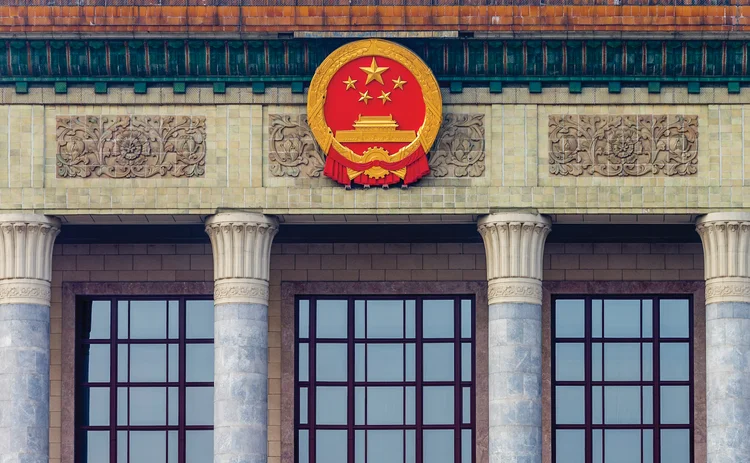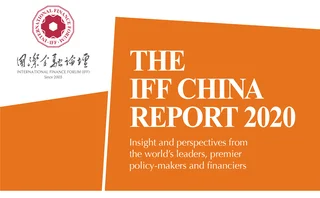
Feeling the stones – A brave transition to openness


Looking at China’s reform and opening-up over the past 40 years, we are deeply impressed and see the evidence on the ground when we travel there.
In the early 1980s, China represented 2% of global GDP. It now represents about 16%. At that time, China was, by any measure, a poor country. It has since transformed itself into the middle-
income – in some respects, upper middle-income – country it is today. The World Bank recently reported that 850 million people have been lifted out of poverty. This has been made possible by a succession of Chinese political leaders deciding that the market economy had to occupy centre stage in China’s reform process – in goods markets, product markets and labour markets – and certainly in financial markets as well.

The nation has undergone an impressive transformation. Consider the psychological challenge undertaken by young Chinese entrepreneurs previously employed by a central government department, and who grew up in a culture of state-owned enterprises (SOEs). These people have left the comfort and security of government employment and built their own enterprises, and then taken the first tentative steps into the global marketplace following the ‘Go Out’ policy. This has all been anchored to a single underlying principle: the discipline of the markets that can succeed or fail on the strength of their competitive success – or failure – in an open marketplace.
China emerged from its post-1949 tradition a planned economy. In a series of long-lasting debates in the 1980s and 1990s, the leadership considered the role of markets and planning, and whether China should transition to a market economy. But the paramount leader of China between 1978 and 1992, Deng Xiaoping, always had the same response: “We are going to find the balance between what the state does through planning, and what the market does by crossing the river, feeling the stones one by one.”
There is a continuing role for state investment in national infrastructure, but a declining role for SOEs, particularly in non-infrastructure sectors of economy. Meanwhile, private firms are increasingly important in labour-intensive, low-wage manufacturing for exports. By 2013, there was a recognition by Chinese national economic planners that the model had to change and a new economic model sought. The international community looked carefully at the the market reform document of the Third Plenary Session of the 18th Central Committee of the Communist Party of China (CCCPC) in 2013, which attempted to ensure further reform of China’s economy and to further embrace the principles of the market – not just in the financial sector, but across the entire economy. There are 66 sets of reforms, one of which deals with financial sector reform. These methods are inspiring because the Chinese economic model is not static but continues to change dynamically to meet the demands of the future.
In 2015, for a variety of complex reasons, instability threatened the Chinese financial market. Policy-makers in China responded quickly in August that year, with economy-wide market-based reforms, particularly in the financial sector.
There was a slowing of the reform process in the years that followed, but the past 24 months have seen an uptick. Considerable progress is being made in the financial sector, such as announcements in 2018 and 2019 to release a timeframe on removing caps on foreign equity in financial markets in 2020.
China is moving in this direction because the efficiency of capital allocation in the Chinese economy remains low. The capital intensity of a given unit of production is around one-third that of a fully functioning, market-based financial system. Driven by a greater foreign market presence in all areas of the financial services industry, the Chinese leadership has decided to increase financial sector reform.
In certain areas of the financial industry – such as digital finance – China has not only caught up but has become a global leader. However, other sectors of China’s reform programme remain slow. Its competition policy – a fundamental principle in any approach to market economics – is another classic case in point. So far, there has been very uneven progress, which has brought private equity into existing SOEs.
Headwinds against progress
The growth of the Chinese economy over the past few years has slowed considerably. The trade war with the US creates a headwind against China’s growth, but it is not the only one. Another are the drivers of the growth itself. On the positive side, direct state investment in Chinese infrastructure has declined by almost 20%. In many areas, infrastructure spending had reached capacity, in some instances, resulting in overbuild. The decline in investment in infrastructure is therefore a welcome development. On the other hand, Chinese domestic consumption – which is to become the primary driver of economic growth under the new model – has been growing, but not fast enough to offset declining state investment.
Another significant factor is the slowing in private fixed capital investment by private firms, suggesting challenges to China’s overall growth performance. The change appears to be a result of uncertainty among Chinese private sector participants around the final balance between the role of state planning on the market, state or private allocation of capital, or the relative competition policies standing between private firms and SOEs in the future.
Many private firms are adopting a cautious approach towards capital usage instead of further expansion at home and abroad. This change in private fixed capital investment behaviour is also contributing to slower Chinese growth.
As Chinese leaders organise the 14th Five-Year Plan (2021–25), which will be determined in the first half of 2020, the essential question for Chinese private firms and the international marketplace will be the future role of the market in China’s evolving economic model.
At a recent meeting I attended at the Great Hall of the People in Beijing, President Xi Jinping spoke on the continued importance of the role of the private sector and the market. But the private sector and international financial markets will be looking for more than speeches: they are seeking actual policy changes that will shape the future of domestic markets in general – competition policy, in particular – and the liberalisation of China’s domestic capital markets.
For the world at large, including China’s private sector, there is an open question on everyone’s mind: Which way will China now go? Will the government retake the decision of six years ago at the Third Plenary Session of the CCCPC to deepen reform and opening-up? Will it continue to use the current economic model? Or will we see a greater role for the state sector and a lesser role for the private sector in the future?
It is likely Chinese entrepreneurial firms will take on a greater role in driving growth in the future. These firms have already pushed forward growth over the past 40 years. Currently, 60% of China’s GDP, 80% of employment, 70% of tax take and probably 90% of innovation comes from these extraordinarily dynamic firms. But, as we look to the next five years – will this trend change?
Only users who have a paid subscription or are part of a corporate subscription are able to print or copy content.
To access these options, along with all other subscription benefits, please contact info@centralbanking.com or view our subscription options here: subscriptions.centralbanking.com/subscribe
You are currently unable to print this content. Please contact info@centralbanking.com to find out more.
You are currently unable to copy this content. Please contact info@centralbanking.com to find out more.
Copyright Infopro Digital Limited. All rights reserved.
As outlined in our terms and conditions, https://www.infopro-digital.com/terms-and-conditions/subscriptions/ (point 2.4), printing is limited to a single copy.
If you would like to purchase additional rights please email info@centralbanking.com test test test
Copyright Infopro Digital Limited. All rights reserved.
You may share this content using our article tools. As outlined in our terms and conditions, https://www.infopro-digital.com/terms-and-conditions/subscriptions/ (clause 2.4), an Authorised User may only make one copy of the materials for their own personal use. You must also comply with the restrictions in clause 2.5.
If you would like to purchase additional rights please email info@centralbanking.com test test test







